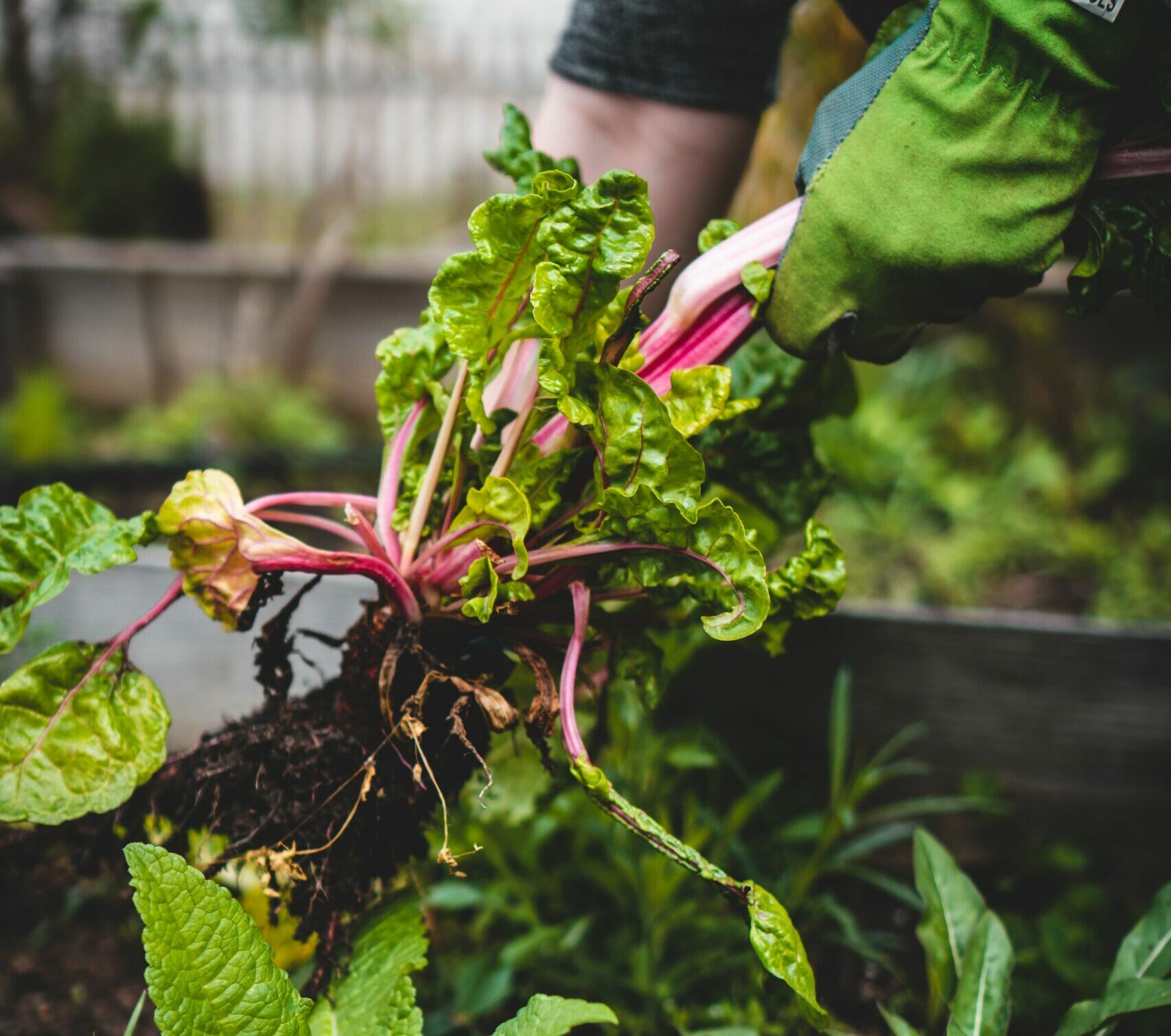Here is what to consider when deciding where to plant your garden: in the ground vs raised beds vs pots and containers. Learn the pros and cons of each gardening spot. If you have a backyard, you will have more options than someone gardening in a small apartment. The great news is you don’t need a lot of room to garden!
Each method offers advantages and challenges. If you are wondering if you should plant in containers, raised garden beds, or in the ground, keep reading.
Ground vs Raised Beds vs Pots
Some things to consider before starting a garden include:
What You Have Now
If you already have raised beds, planters, or a dedicated garden space, it may make sense to start there. Especially if the sunlight, soil, and drainage are sufficient.
Sunlight
To grow fruits and vegetables, the spot will need 6 – 8+ hours of direct sunlight each day.
Soil
You will add your own soil to containers and raised beds. But if you are planting in the ground, the soil must drain well. If there is clay, choose a different spot.
Access to Water
If you are planning a large garden, you will need to ensure easy access to water. Consider if you will set up irrigation, a sprinkler, or hand water.
Convenience
Gardening seems to start out fun but it sometimes becomes tiresome. Make it convenient to water, harvest, and access. For example, I like having pots of basil out my back door so I can easily pick it to use for dinner.
Plant Spacing
What do you want to grow? Proper plant spacing is essential for thriving plants. If you are dreaming of a garden of melons, cucumbers, and squash, you will want a large area. These vining plants sprawl and take up a lot of room. One melon plant will take up two square feet in a garden.
Compare this to being able to plant four Swiss chard plants in one square foot area. Radishes and carrots take up even less room! You can plant 16 radish seeds in a 12″x12″ space.
What to Start Your Garden In
The planting spaces you choose can greatly impact the success of your garden, especially when growing food. Here’s what to consider for gardening in the ground, raised garden beds, and pots/containers.
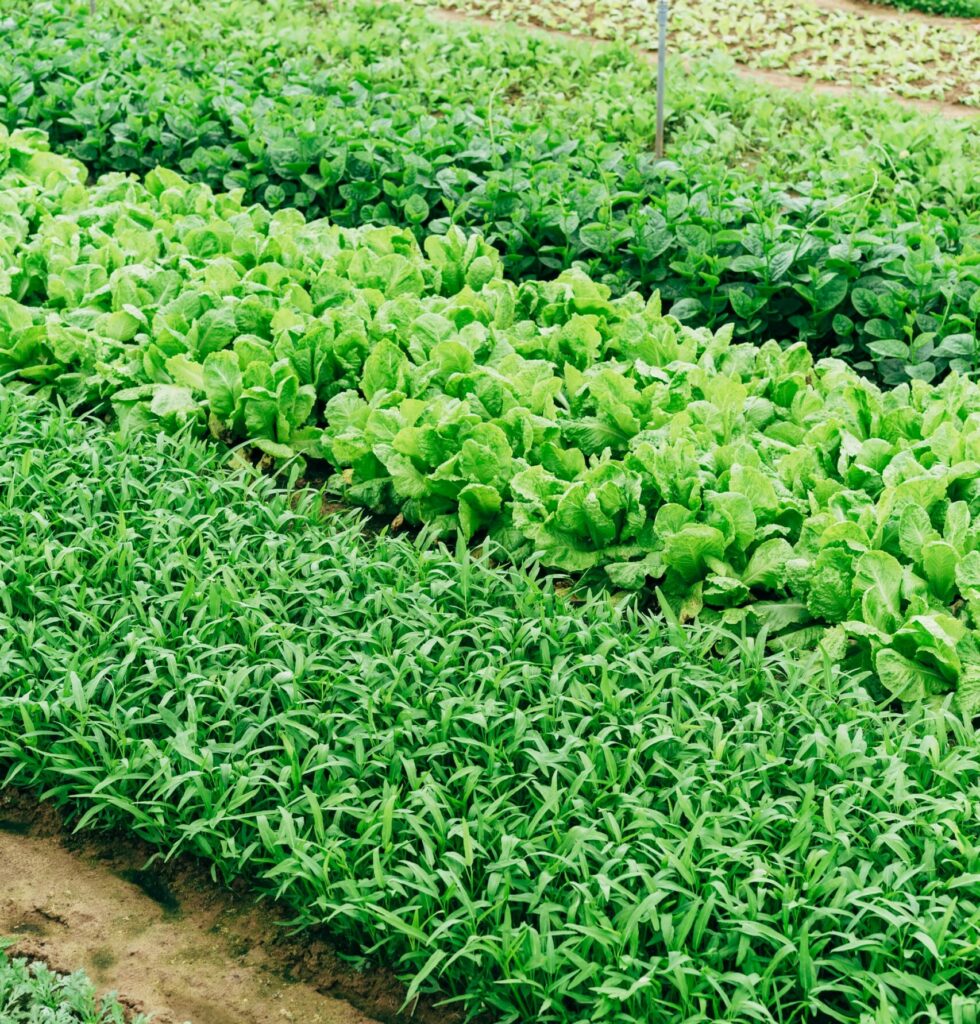
Starting a Garden in the Ground
What’s Involved
- Soil type: Test soil for pH and nutrient levels; amend as needed; ensure soil is well-draining
- Soil prep: Tilling; removing rocks and debris
- Planting: Depending on the crop, seeds or seedlings are planted directly into the prepared soil
- Maintenance: Regular watering, weeding, and pest control
- Pests: Consider barriers or natural deterrents
- Harvest
Pros and Cons
Pros to planting in the ground
- Cost effective: Using what you have
- Enough space:
- The ability to have a lot of space for large gardens
- Can grow crops that take up a lot of room (such as vining plants)
- Can plant in rows
- Grow crops with long roots
- Great for root crops
- Soil microbes: Benefits from a diverse microbial ecosystem vs only bringing in bags of soil
- Water retention: Ground soil often retains moisture better than containers
- Natural nutrients: Direct access to the soil’s nutrients
- Worms: Earthworms can be beneficial for soil aeration and to distribute nutrients
- Keeps plants’ roots cooler in heat of summer (vs pots in a container, etc.)
Cons to planting directly in the ground
- Soil quality: Existing soil may not be well-draining or ideal for all plants
- Diseases: Vulnerable some soil-borne diseases
- Pests: Ground-dwelling pests; can attract deer, rabbits, raccoons, etc.
- Can be expensive to amend soil
- Can be labor-intensive to till soil
- Weeding: May require more extensive weeding
- May be more open to the elements
Soil contains varying sizes of sand, silt, and clay particles. Sandy soils drain quickly due to larger pores, whereas soils rich in clay retain water longer due to smaller pores, which can lead to poor drainage, root rot, and compaction issues.
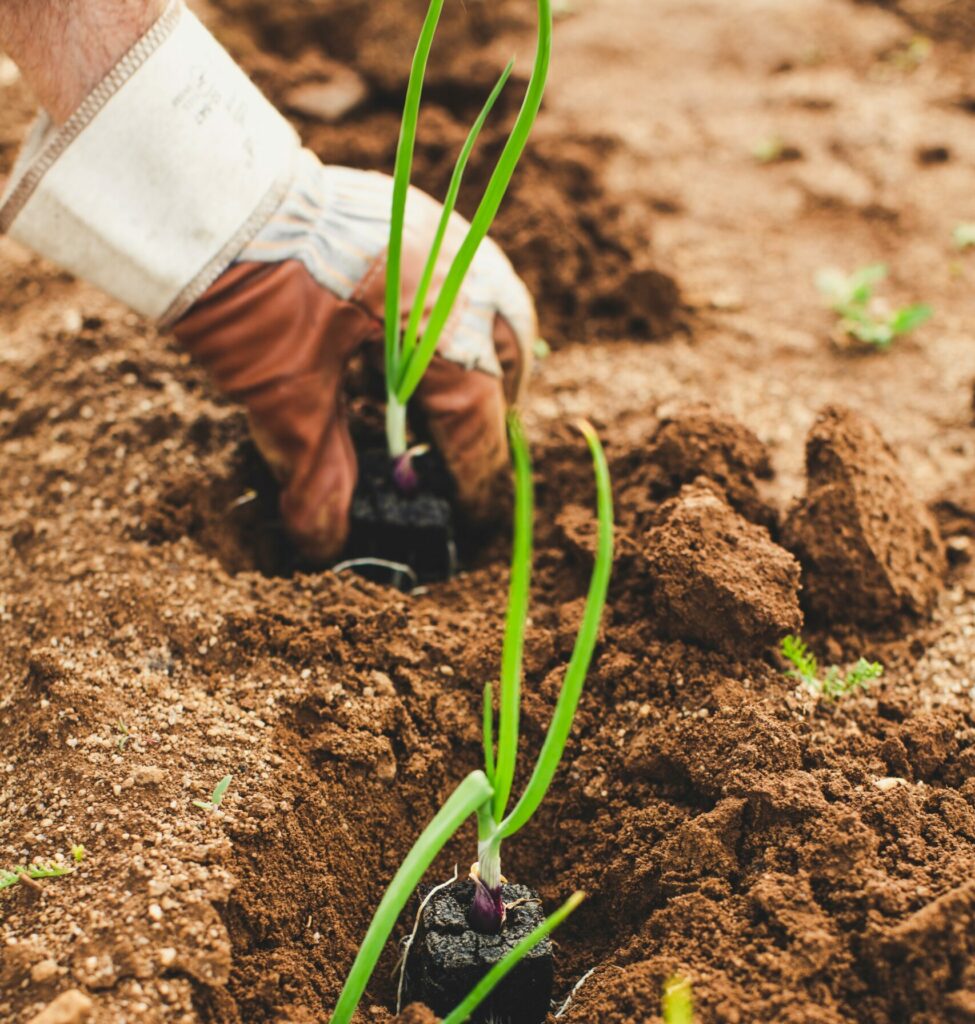
Tips for In-Ground Gardening Successfully
- Soil testing: Before planting, test soil’s pH and nutrients
- Amend the soil: Based on testing, add compost, manure, or other organic matter to improve soil structure.
- Rotate crops: Essential to prevent soil-borne diseases and reduce pests
- Deep watering: Encourage deep root growth by watering less often but more thoroughly.
- Mulch: Use organic mulch to retain moisture, suppress weeds, and regulate soil temperature.
- Control weeds: Regularly hoe or hand-pull weeds to prevent them from competing with your plants.
- Natural pest control: Monitor garden regularly to ward off an infestation; introduce beneficial insects or use companion planting to deter pests.
- Protect from animals: Surround garden with netting or protection from deer, raccoons, etc.
- Seasonal prep: Add organic matter in seasons you don’t garden (i.e. in the fall for spring planting)
- Space correctly: Give plants enough room to grow and for air to circulate.
- Fertilize wisely: Use organic fertilizers (when necessary) to provide sustained nutrients; sometimes nutrient-rich soil is enough
Learn more:
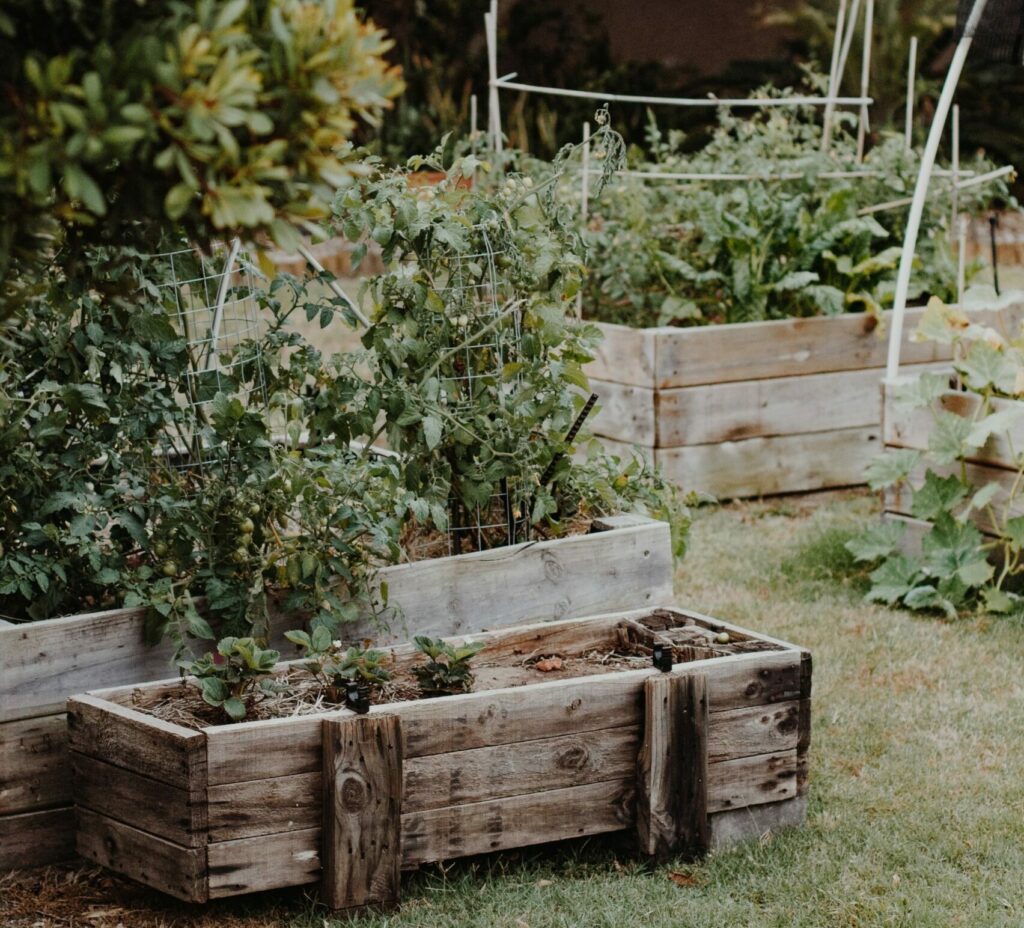
Gardening in Raised Beds
Raised garden beds are contained units filled with soil, elevated above the ground level. They offer a neat, controlled environment for growing vegetables, herbs, and other crops. Raised beds can be built from various materials and their height can vary to suit the gardener’s needs.
Choosing to plant in raised garden beds gives you better control over soil conditions. This often leads to a productive harvest in a compact space. You will need to fill the bed with soil and can amend with compost and organic materials. There are many types of raised beds.
Raised Garden Bed DIY
You can build a raised bed cheaply with DIY designs. To keep it safe, when choosing wood, opt for non-treated, rot resistant lumber like cedar, oak, or locust. Treated wood may leach heavy metals into the soil that could be taken up by plants.
If you have treated lumber at your disposal, the University of New Hampshire Extension advises you can line the beds with thick plastic to form a barrier between the wood and soil.
Other options for DIYing your own include using bricks, cinder blocks, rocks, and plastic decking material. If the building material can hold soil and doesn’t contain any toxic substances, you can use it.
Garden Bed Kits
You can also buy kits. They come in a variety of materials, such as wood (it’s often cedar), resin, galvanized metal, and steel. You can build or buy one that’s elevated with legs so you can stand while gardening. These stand alone kits are self-contained. With enough sunlight, you can put it on the patio, porch, or deck.
What’s Involved
- Building or buying the raised beds: You will need to DIY a raised bed or buy one and possibly put it together.
- Soil: Soil is often a mixture of garden soil, compost, and other organic matter, providing a rich growing medium.
- Planting: Similar to in-the-ground planting but within the confines of the raised beds.
- Maintenance: Raised beds can simplify tasks like weeding and pest control and provide good drainage.
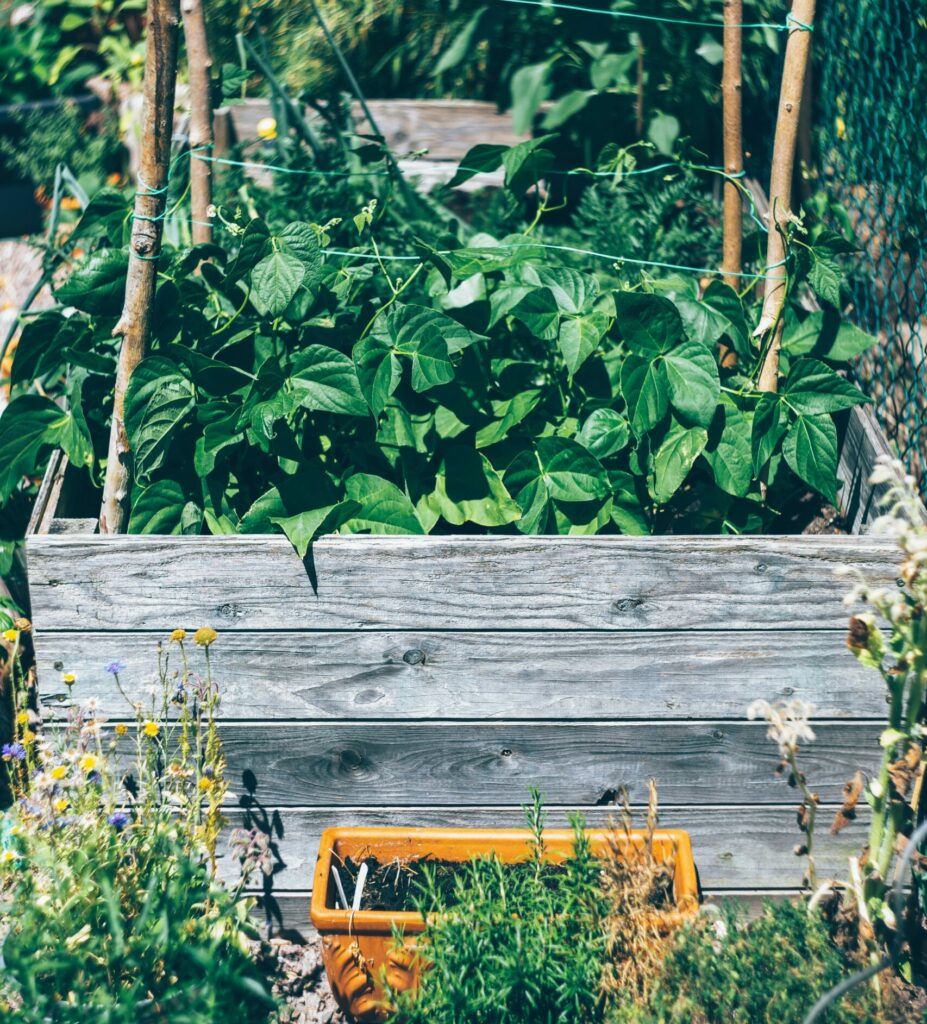
Pros and Cons to Using Raised Beds
Pros to planting in raised garden beds
- Overcome poor native soil conditions: You control the soil quality
- Drainage: Improved drainage helps prevent overwatering
- Warmer soil: Soil in raised beds warms up faster in the spring, extending the growing season (vs direct-in-ground gardening)
- Accessibility: Raised off the ground, they’re easier on the back and knees
- Can locate it where you want
- Typically less weeds due to controlled soil
- Doesn’t require a lot of work to till and amend the soil after each planting
- May deter certain pests, like rabbits
Cons to gardening in raised beds
- More permanent than in-ground gardening (unless small moveable raised bed kit)
- Initial cost: Building or buying raised beds requires an initial investment
- Limited lifespan: Wood raised beds can rot over time, requiring replacement
- Treated wood and other materials might not be suitable due to chemical leaching concerns
- May have to build it yourself
- Cost for filling with quality soil
- Watering: May require more frequent watering as they can dry out faster
- Space: Might limit planting options due to space constraints
- Optional: Will need to add your own worms to improve soil
- Crop rotation: Space may factor in when rotating crops and companion planting
- May need to use organic fertilizers as raised bed soil depletes nutrients faster
- Animals, especially deer, can still access it if it’s not protected with mesh, etc.
If you build a raised bed on the ground on top of your existing soil, you may want to protect the base. Before filling it, line the bottom with wire mesh.
Tips for Raised Bed Gardening Successfully
- Use quality materials: Use rot-resistant wood or durable materials
- Make it deep enough: It needs to be a least 12 inches deep to accommodate most plant roots
- When making your own raised bed, be sure to not make it more than 4 feet wide so you can easily reach the center without crushing the soil
- Spend money on good soil: Combine compost, peat moss, and vermiculite for a well-draining and nutrient-rich blend
- If it’s over 12″ in depth: You fill the bottom with lower quality soil or native soil and organic matter as fill
- Mulch: Can use to retain moisture and suppress weeds
- Proper spacing and companion planting: Keep both in mind
- Monitor regularly for pests
Learn more:
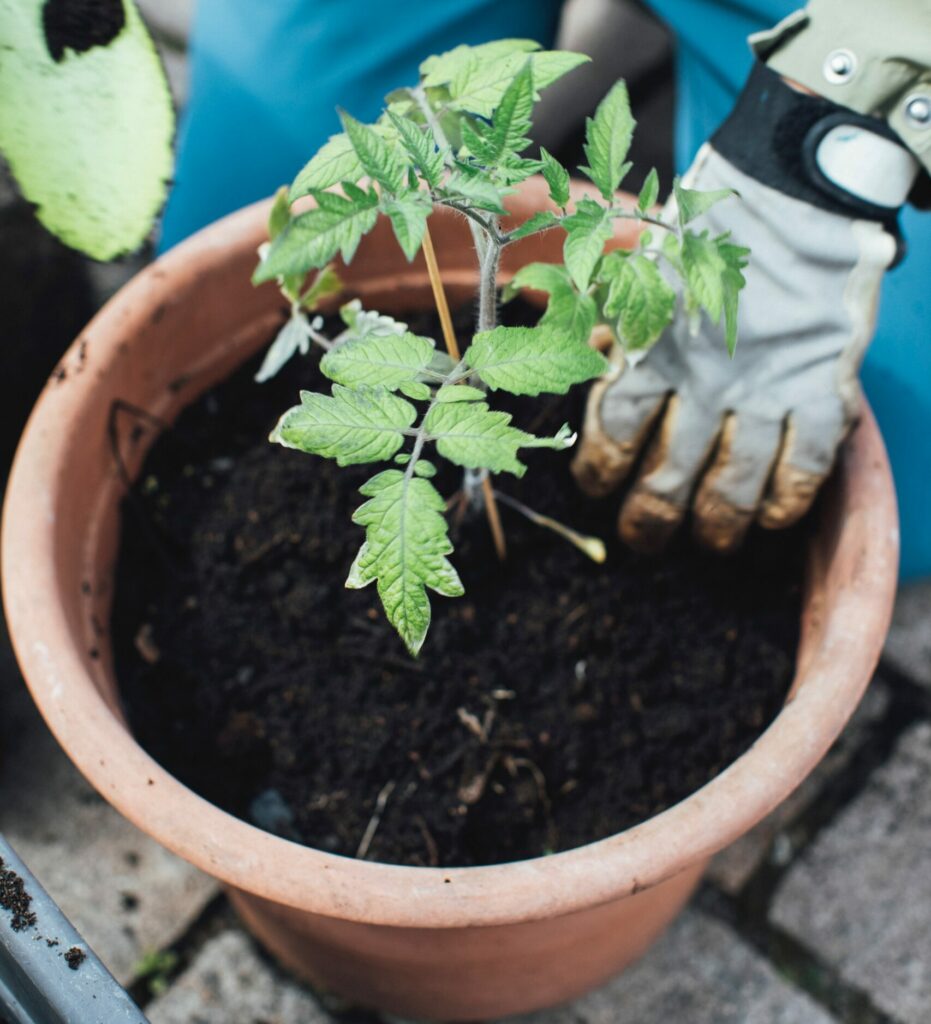
Gardening in Pots & Containers
What’s Involved
Container gardening involves growing plants in various types of pots, containers, planters, 5-gallon buckets, or hanging baskets. It’s a flexible option that can be adapted to almost any space, including patios, balconies, and even indoors. Here’s what container gardening entails:
- Container selection: Choosing containers with proper drainage and size for the intended plants
- Choosing soil: A specialized potting mix often works best, providing the right balance of nutrients, moisture retention, and drainage
- Space requirements: Choose plants that will work with the size of your container
- Location: Place pots in areas that are convenient for watering with enough sun
The soil, or growing medium, is important no matter where you garden; however, it’s essential in pots. It physically supports the plants while supplying the roots with nutrients, water, and air, encouraging maximum root growth.
The containers must be well draining. If the extra water can’t drain out, fresh air cannot enter and roots will suffocate.
Choose light and fluffy growing media for good aeration to promote root growth.
Pros and Cons to Container Gardening
Pros to container gardening
- You don’t need a lot of space
- You can garden on a patio, deck, balcony; perfect for urban dwellers and people without a backyard
- It’s often less costly
- Overall less labor intensive
- Is more doable than large-scale gardening
- Great for new gardeners
- Ideal for herb gardens
- There are a lot of things you can grow
- Nothing to build or set up
- Minimal weeding
- You may already have suitable pots and containers at home without needing to buy them
- Complete control over the soil
- May be able to move pots (if they are small enough)
- Less chance for insects to destroy entire garden because plants are compartmentalized
Cons to container gardening
- Size constraints may limit the size and types of plants you can grow
- Difficult to grow vining plants
- What the pot or container is made of: Some will retain heat more than others
- Must ensure adequate drainage
- Watering: Potted plants often require more frequent watering
- Nutrient management: Requires careful monitoring and potential supplementation
- Typically won’t have worms; can add in larger containers but you have to be sure they don’t dry out
- Can set smaller pots higher to avoid back and knee issues
Tips for Container Gardening Successfully
- Topsoil should only be added to very large containers; don’t exceed 5 – 10% of the volume
- Choose the right container: Ensure it’s large enough for the plant’s growth and has drainage holes
- Use potting mix: It should be nutrient-dense, light, and fluffy
- Monitor watering; water when the top inch of soil feels dry
- Position pots to optimize sunlight for whatever you are growing: Food-producing plants need 6 – 8 hours a day while other plants may prefer shade
- If using small pots, keep them off the ground to deter some pests
- Choose plants suitable to the container
Learn more:
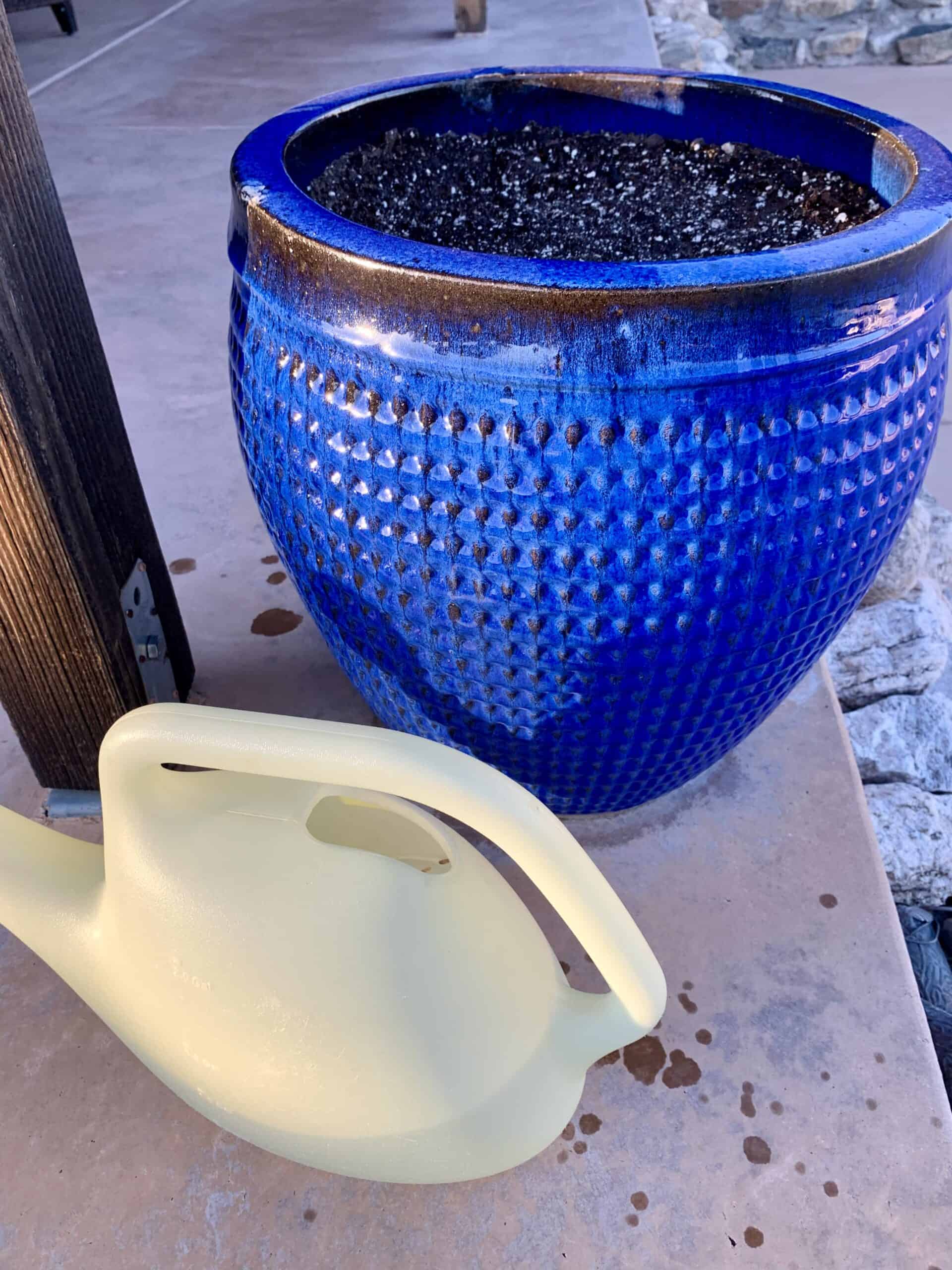
FAQs
What are disadvantages to using raised beds?
You either have to build your own raised bed or buy a kit. This involves some building. Raised beds can be costlier to set up initially. There is also the potential for wood rot over time.
Should I plant in containers, raised garden beds, or in the ground?
Each method has its benefits: containers offer mobility, raised beds provide better soil control, and ground planting is cost-effective and allows for larger growth. Planting directly in the ground often involves more work to till the existing soil. Plan to enrich the soil as well.
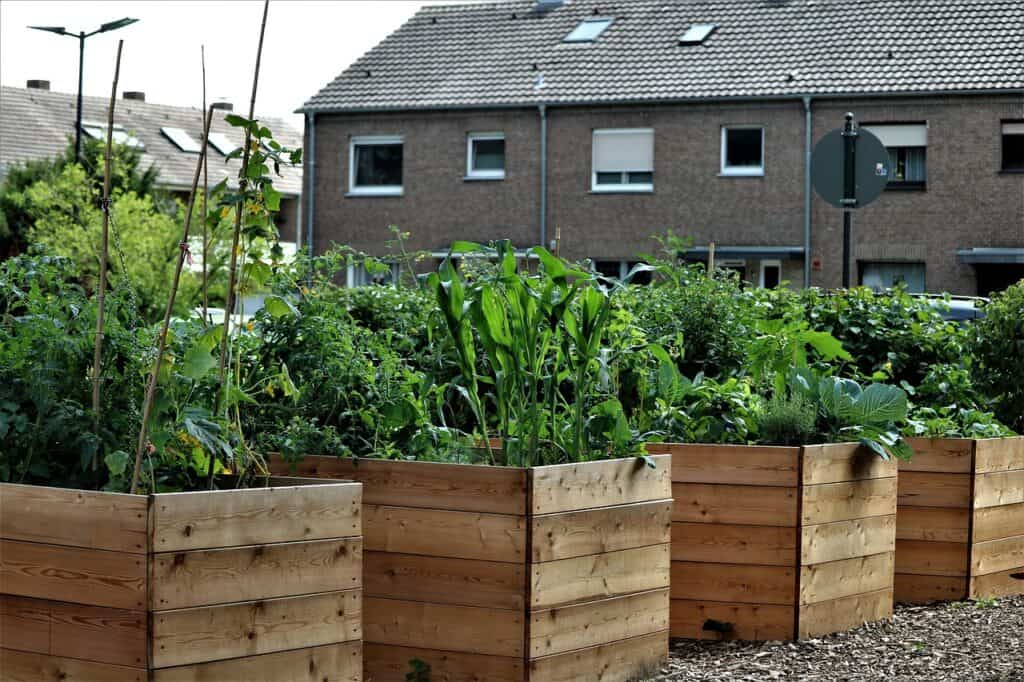
What is the difference between a planter box and a raised bed?
A planter box typically has a bottom and is more suited for patios or decks, while a raised bed is bottomless and sits directly on the ground. The exception is for raised bed kits that are self-contained. These are often on legs.
How do you start a garden in pots for beginners?
Choose pots that are large enough. They should be at least 12″ deep for most crops. Ensure it has drainage holes; fill it with potting mix; plant your seeds or seedlings; and water them consistently.
How deep should a container vegetable garden be?
A container vegetable garden should generally be 12 – 18 inches deep to accommodate most vegetable roots.
How do you start a vegetable garden in a planter box?
Select a suitable size box, ensure good drainage, use a quality potting mix, plant your chosen vegetables, and maintain consistent watering.
How do you start a vegetable garden bed from scratch?
Choose a sunny location, remove grass and weeds, loosen the soil, add compost or organic matter, level the bed, and plant your vegetables. It’s also important to plant the right types of plants for your area during the correct season.
How many vegetables can I grow in a 5-gallon bucket?
In a 5-gallon bucket, you can grow one tomato plant or 1 – 2 pepper plants or 3 – 4 bean plants; 16 radish and/or carrot seeds; or 3 – 4 lettuce plants.
Is it better to plant in the ground vs raised beds vs pots?
When considering whether to plant directly in the ground vs in a raised bed or in a container, it’s important to know one isn’t better than the others. It all depends on your space and what’s available to you.
Consider also your resources. How much soil can you afford to bring in? How much work do you want to do? Will you have to buy the containers or do you have some?
Also consider sunlight, existing soil quality (if considering planting in the ground), and what you want to plant. Some crops and plants need more room and will do better in larger gardens vs containers.
Should I plant in containers, raised garden beds, or in the ground?
Consider your space, soil quality, sunlight, and mobility needs. Containers are versatile; raised beds offer good soil control and the option to grow more variety; and ground planting can accommodate larger gardens.
How deep should a container vegetable garden be?
Ensure a depth of 12 to 18 inches to support healthy root growth for most vegetables.
Comparing Ground vs Raised Beds vs Pots
These three planting methods each offer unique opportunities and challenges.
- For large-scale, diverse food gardens, in-the-ground planting offers the most space and natural soil interaction.
- Raised garden beds provide controlled soil quality and improved accessibility.
- Pots and containers offer the flexibility to garden virtually anywhere, with complete control over the growing conditions.
Choosing the right method depends on your space, goals, and the types of foods you wish to grow. With careful planning and consideration of each method’s unique aspects, you can create a garden that flourishes and nourishes.
If you are beginner gardener, you may want to start with container gardening, and expand from there. Use what you have. You may want to do a combination with a small raised bed and a few containers.
Each planting option has its own unique benefits and challenges. The best choice depends on your specific situation, preferences, space, and the types of food you wish to grow.
Understanding the pros and cons of each method and considering factors like soil, pests, weeding, and even worms will help you create a successful garden that yields fresh, delicious produce right from your own space. No matter the method, the joy of harvesting your homegrown food awaits!
Featured image credit: Jonathan Kemper, Unsplash

